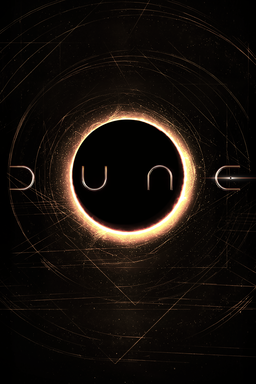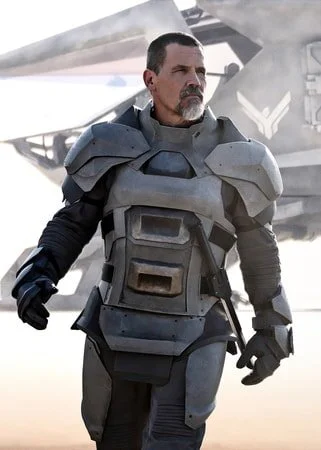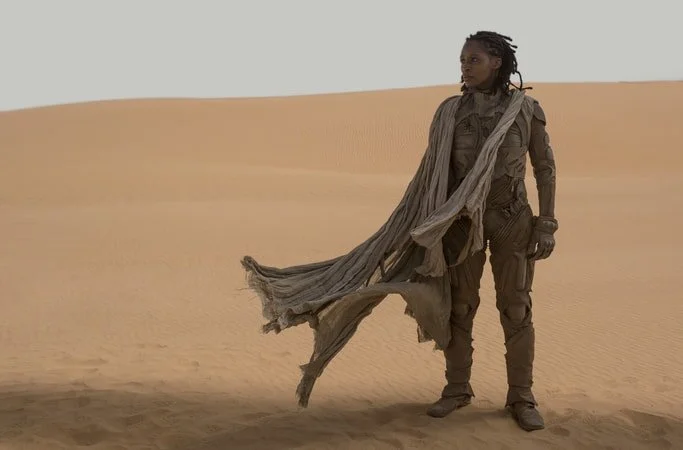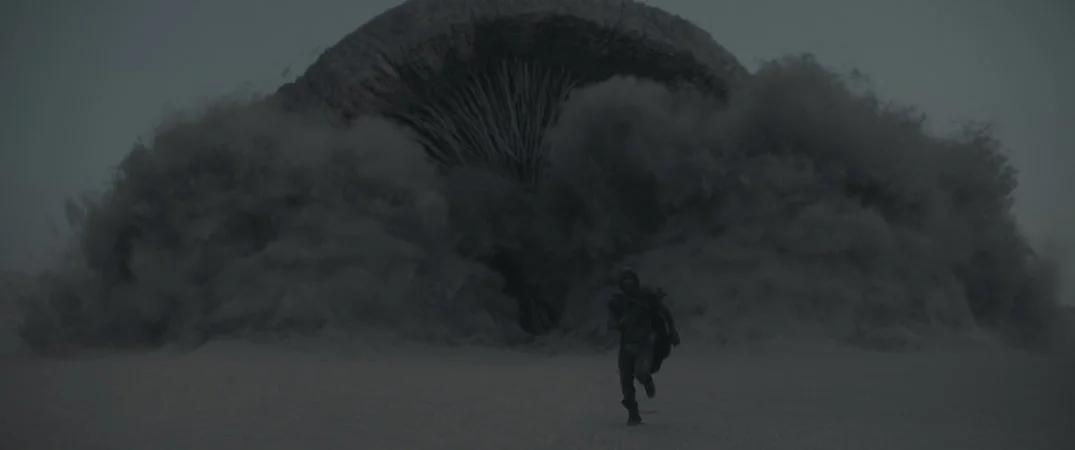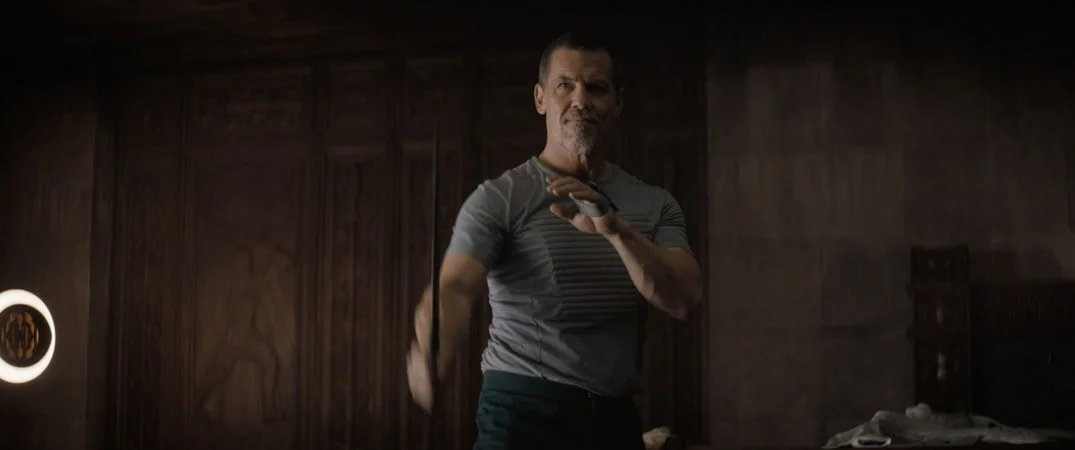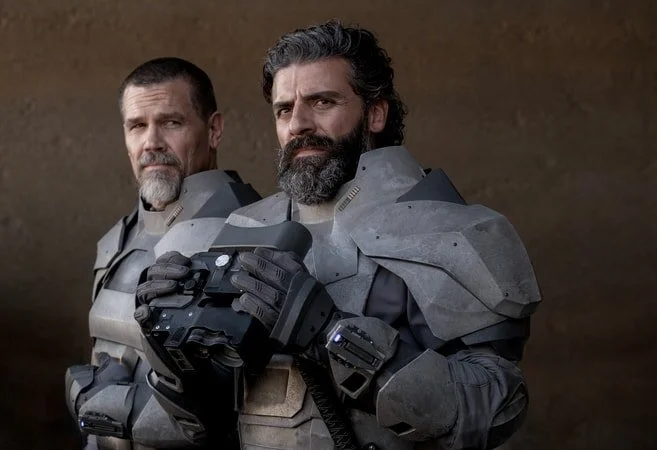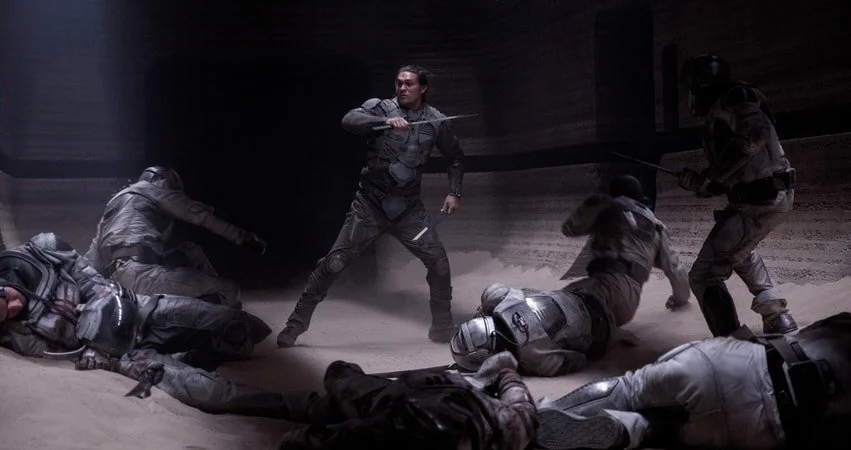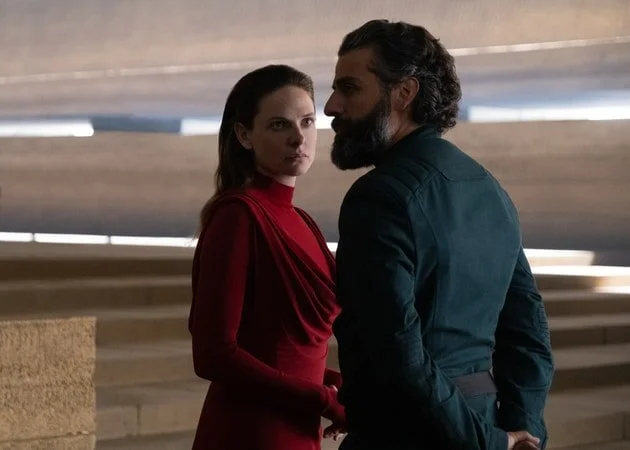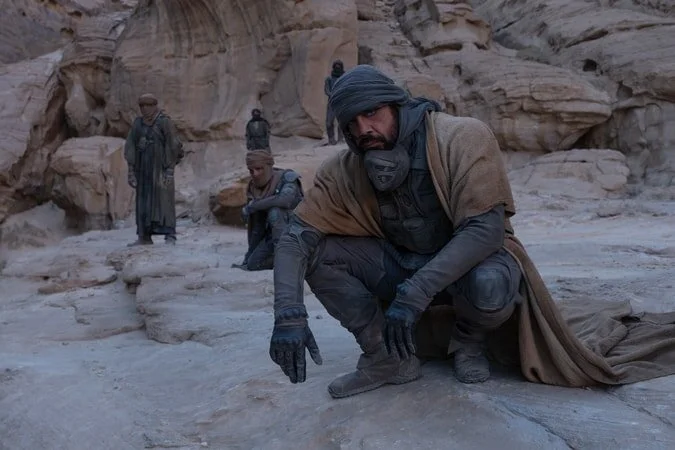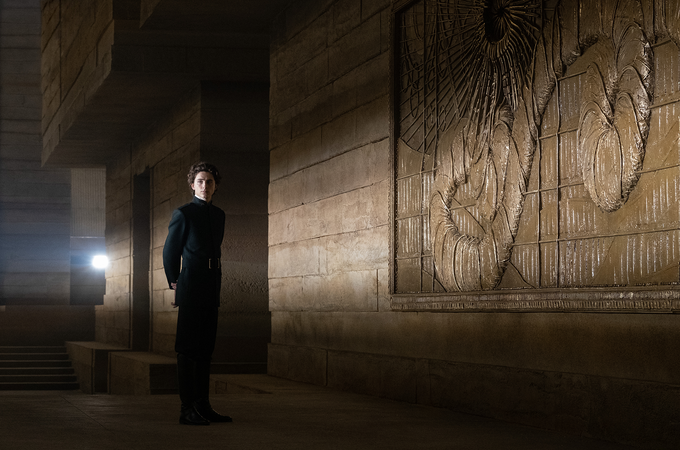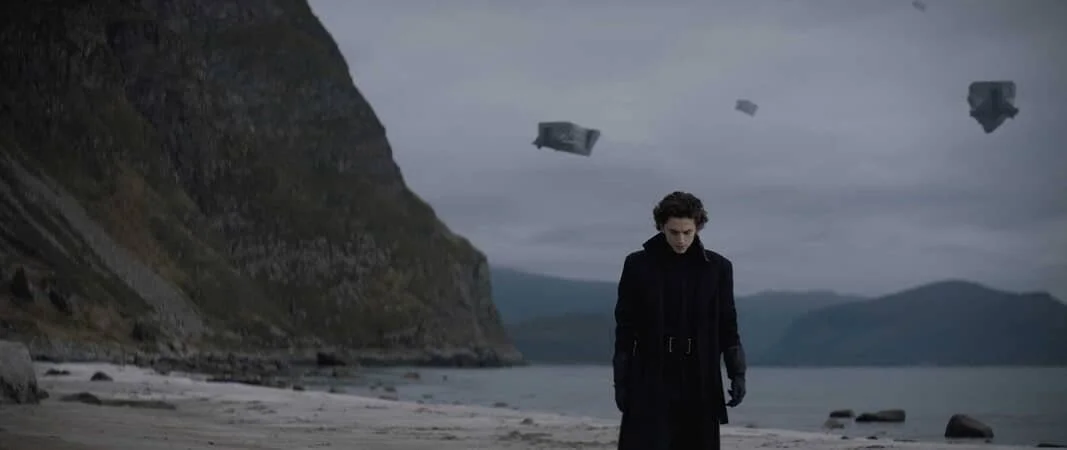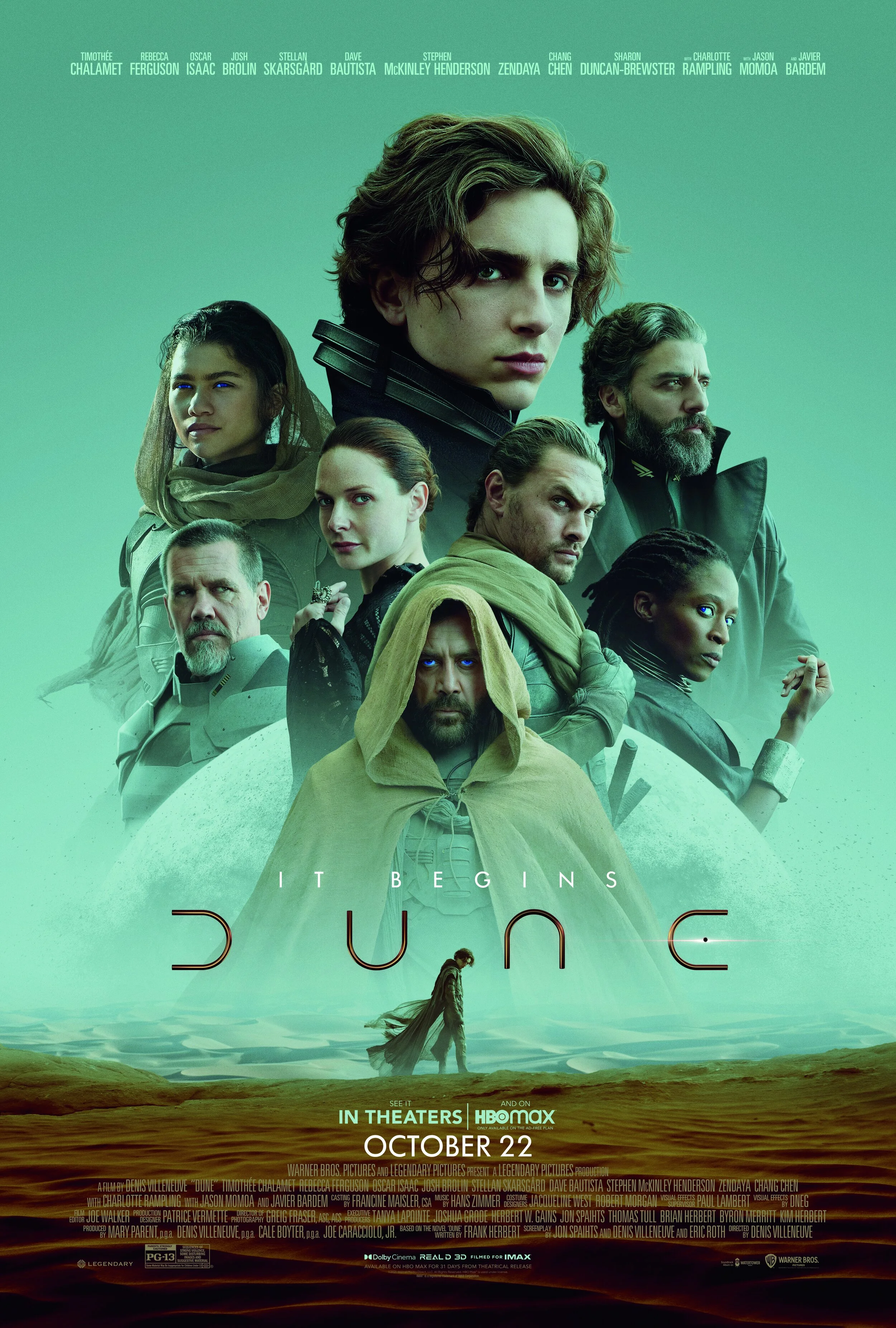Dune: Part One Review - This Is Only the Beginning
Dune has a storied history. Ever since the original novel by Frank Herbert was published in August of 1965, the story of Dune has been considered amongst the best science-fiction stories ever told, selling nearly twenty million copies. It has been translated into a multitude of languages. It was so well-liked in fact that notable science-fiction authors like Arthur C. Clark, Robert A. Heinlein, P. Schuyler Miller, and Algis Budrys even read it and hailed the novel as “powerful, convincing, and most ingenious.", "one of the landmarks of modern science fiction ... an amazing feat of creation.", "The time lives. It breathes, it speaks, and Herbert has smelt it in his nostrils", among various other praises of the world Herbert creates.
Three years after the original publication of Dune, Frank Herbert published a follow-up novel called Dune Messiah. Shortly afterward, Alejandro Jodorowsky expanded the Dune universe even further with a filmed adaptation of the original Dune novel with music from people like Peter Gabriel, prog-rock groups like Pink Floyd and Magma, set and character designs from H.R. Giger (who would later become famous for his work on the Alien films) and Jean Giraud, with a cast comprising of his son as Paul Atreides, Salvador Dalí as Shaddam IV, Amanda Lear as Princess Irulan, Orson Wells as Barron Harkonnen, Gloria Swanson as the Reverend Mother, David Carradine as Duke Leto Atreides, Geraldine Chaplin as Lady Jessica, Alain Delon as Duncan Idaho Hervé Villechaize as Gurney Halleck, Udo Kier as Piter De Vries, and Mick Jagger as Feyd-Rauhta. Considering the film’s production has a documentary called Jodorowsky’s Dune, this never got off the ground.
In the meantime, Herbert was plugging away at Children of Dune, the third Dune novel released in 1976. Two years later, The Illustrated Dune was published by Berkley Books with thirty-three black and white sketches and eight full-color paintings by the cover artist for the original Dune novel, John Schoenherr. A year later, the Dune universe expanded yet again as a board game released by Avalon Hill. In 1981, Herbet released a fourth novel, entitled God Emperor of Dune, the 11th best-selling hardcover fiction novel for that year.
After the film rights lapsed in 1982, Dino De Laurentiis, an Italian producer, purchased the rights. 1984 was the year of Dune. The Dune Encyclopedia, a collection of essays written by 40-plus contributors, was released as well as The Making of Dune (the movie, not the novel), The Dune Storybook (again, the film), the fifth novel in the Dune franchise, Heretics of Dune (which was the 13th best-selling hardcover fiction novel for that year)¸ Dune: The Official Comic Book (this time, it was based on the novel), another board game (this time published by Parker Brothers), a National Lampoon parody called National Lampoon’s Doon, and of course, the David Lynch-directed Dune, which was nothing short of a commercial and critical failure. The film starred Kyle MacLachlan as Paul Atreides, Jürgen Prochnow as Duke Leto Atreides, Francesca Annis as Lady Jessica, Sean Young as Chani, Kenneth McMillan as Baron Vladimir Harkonnen, Siân Phillips as Reverend Mother Gaius Helen Mohiam, Max von Sydow as Doctor Kynes, Sting as Feyd-Rautha, Freddie Jones as Thufir Hawat, Richard Jordan as Duncan Idaho, Everett McGill as Stilgar, Patrick Stewart as Gurney Halleck, Dean Stockwell as Doctor Wellington Yueh, and José Ferrer as Padishah Emperor Shaddam IV.
After the film rights lapsed in 1982, Dino De Laurentiis, an Italian producer, purchased the rights. 1984 was the year of Dune. The Dune Encyclopedia, a collection of essays written by 40-plus contributors, was released as well as The Making of Dune (the movie, not the novel), The Dune Storybook (again, the film), the fifth novel in the Dune franchise, Heretics of Dune (which was the 13th best-selling hardcover fiction novel for that year)¸ Dune: The Official Comic Book (this time, it was based on the novel), another board game (this time published by Parker Brothers), a National Lampoon parody called National Lampoon’s Doon, and of course, the David Lynch-directed Dune, which was nothing short of a commercial and critical failure. The film starred Kyle MacLachlan as Paul Atreides, Jürgen Prochnow as Duke Leto Atreides, Francesca Annis as Lady Jessica, Sean Young as Chani, Kenneth McMillan as Baron Vladimir Harkonnen, Siân Phillips as Reverend Mother Gaius Helen Mohiam, Max von Sydow as Doctor Kynes, Sting as Feyd-Rautha, Freddie Jones as Thufir Hawat, Richard Jordan as Duncan Idaho, Everett McGill as Stilgar, Patrick Stewart as Gurney Halleck, Dean Stockwell as Doctor Wellington Yueh, and José Ferrer as Padishah Emperor Shaddam IV.
Capitalizing on the heightened popularity of Dune, Herbert published Chapterhouse: Dune in 1985, along with a short story collection entitled Eye, his last works before his death the following year. Marvel also published an adaptation of the film in Marvel Super Special #36 and a three-issue limited comic series entitled Dune from April to June.
Six years later, Ace Books published a collection of Dune-related poems written by Frank Herbert before his death called Songs of Muad’dib. The same year, Virgin Interactive published the Cryo Interactive-developed adventure strategy video game called Dune, based on the novel from almost thirty years prior. But that wasn’t the only Dune video game released in 1992. Westwood Studios’ Dune II: The Building of a Dynasty is a real-time strategy game based on the 1984 David Lynch film, rather than the novel, popularizing real-time strategy games as a viable genre and is considered one of the most influential games of all time.
Five years later, a collectible card game called Dune by Wizards of the Coast. As one can guess, it never really caught on in the collectible card game community and was largely forgotten to time, outside of a cult following.
In 1998, Intelligent Games released a remake of Dune II called Dune 2000, but like most remakes, it did not take off for those who loved the original game.
Thirteen years after his father’s death, Brian Herbert and Kevin J. Anderson published the first of a line of prequel novels, starting with Dune: House Atreides and concluding with Dune: House Corrino in 2001.
In December of 2000, Syfy premiered a miniseries called Frank Herbert’s Dune, which would win two Primetime Emmy Awards in 2001, and garnered a video game adaptation of the same name. That same year, Emperor: Battle for Dune was published by Electronic Arts, a sequel to Dune 2000.
A year after Dune: House Corrino, Herbert and Anderson returned to write another prequel trilogy, starting with The Butlerian Jihad, and ending in 2004 with The Battle of Corrin.
In 2003, Frank Herbert’s Children of Dune, a sequel to the Syfy miniseries, Frank Herbert’s Dune, combined Dune Messiah and Children of Dune, and won a Primetime Emmy Award for Outstanding Special Visual Effects for a Miniseries, Movie or a Special.
From 2006 to 2007, Brian Herbert and Anderson published Hunters of Dune and Sandworms of Dune, two novels that wrap up the story Frank Herbert began in Heretics of Dune.
In the following years, Brian Herbert and Anderson published two more novels called Paul of Dune and The Winds of Dune, in 2008 and 2009, respectively.
Around the same time, Paramount Pictures announced they were developing a new Dune film with Peter Berg directing…until he dropped out the following year. Pierre Morel signed on to replace Berg in 2010 but never got off the ground when Paramount dropped the project in March 2011.
From 2012 to 2016, Brian Herbert and Kevin J. Anderson wrote a trilogy of novels called Sisterhood of Dune, Mentats of Dune, and Navigators of Dune, novels about the formation of the Bene Gesserit, the Mentats, the Suk Doctors, the Spacing Guild, and the Navigators, as well as the solidifying of the Corrino imperium.
The same year, Legendary Entertainment acquired the film and television rights to the Dune franchise. A few months after the announcement, Denis Villeneuve was named as the director of the film adaptation, something he would later say was a two-part film series, rather than the traditional “do it all at once” approach Lynch took with his film in 1984.
So, now you’re all caught up on the history of Dune. Now, let’s talk about the merits of Dune: Part One.
I first caught up with Denis Villeneuve the way most people did – with his 2015 film Sicario. I wasn’t a big fan of the film, but he caught my attention by his ability to tell a story about a world that many either ignore or try not to think about. In Sicario, it’s about the life of a hitman tasked within Mexico’s drug cartels. The public knows about these people in tales told by news anchors, internet rumors, and the popular Hitman video games. But as something we don’t deal with every day; all those people are to us are legends – people we never have to worry about but remain on our public radar—a boogie man lurking in the shadows. What Villeneuve does, though, is make them real and terrifying through his portrayal of Alejandro Gillick (played by the magnificent Benicio del Toro), a ruthless and efficient sicario working with FBI Agent Macer (played by Emily Blunt) and CIA Agent Graver (played by Josh Brolin).
Villeneuve returned with Arrival a year later, an unconventional story about aliens arriving on Earth. We’ve had hundreds of stories about aliens arriving on Earth, but the way Villeneuve plays with it speaks to an inherent part of humanity that is beautiful. I would say what it is, but I spoiled the film’s ending for myself in the first ten minutes, and it was one of the most infuriating moments of my moviegoing history. The less you know, the better.
Then, he returned a year later with Blade Runner 2049, a film that forces us to think yet again about the world of Replicants and Blade Runners and their cultural clash. Taking place thirty years after the original film, Replicants are now slaves rather than regular citizens of the world, hunted and “retired” by Blade Runners. There are grander things at play, but the less you know, the better, like most of Villeneuve's work.
So, when the prospect of Villeneuve directing a new film adaptation of the Frank Herbert novel, Dune, I had no question about his ability to pull it off. I didn’t know a lot about the world of Dune. Still, I knew if anyone was going to be able to pull me into a world of massive, ridiculous science-fiction, the only modern director with the ability to make me believe, it was Villeneuve.
In Dune: Part One, Villeneuve is at the top of his game. This is such a singular vision; it’s like a fever dream. From minute one to the end credits, it becomes inherently clear that Villeneuve has gone through everything related to the first Dune novel by Frank Herbert and put it on screen for audiences to see the world Herbert envisioned 50-plus years ago. Villeneuve is a fan of the novel, and all of it comes through in his direction. It’s as if Frank Herbert has been reincarnated and telling his story again for the first time.
What helps this is that Villeneuve was one of three writers of the Dune: Part One script (Eric Roth and Jon Spaihts were the other two). It ensures that Villeneuve’s vision for a one-to-one adaptation of the source material…well, the first half. In the process of this adaptation, Villeneuve, Roth, and Spaihts took the themes of Middle Eastern and Islamic society, environmentalism, empires, gender roles, hero-worship, religion and simplified them. While these themes play a significant role in Dune: Part One, they take more of a back seat to the coming-of-age story Villeneuve is trying to tell with Paul Atreides and the story of the bond between a mother and her son.
To illustrate, think of Dune: Part One’s themes as layers of sand. On the surface, you have the story of Paul Atreides as he grows to be the leader that he wants to be. A layer deeper, you have his mother, Lady Jessica, and father, Duke Leto, trying to shape the kind of leader Paul should be to further the Atreides name. Below that is the reasons behind why Paul’s parents want him to further the Atreides name. It goes deep, but you have to sit and think about it, as these things are not on the surface of Arrakis’s dunes. The themes of the film (and original novel) lie much further down with the Fremen.
Surprisingly, in a film about huge scale things like political intrigue, a space drug called “spice”, a sisterhood obsessed with breeding, and a ton of other things I don’t even have time to list, the acting is one of the most essential pieces that make this adaptation of the Frank Herbert novel work. If Rebecca Ferguson and Timothée Chalamet’s intense bond as mother and son didn’t work, there would be no Dune: Part Two. So much of the film’s focus is solely on their relationship and how they help each other that the supporting cast only serves their story. Oscar Isaac’s Duke Leto is the platform to help his son succeed. Josh Brolin’s Gurney Halleck is the military brain that forges Paul’s tactics on Arrakis. Stellan Skarsgård’s Baron is the unstoppable force, hunting them from the shadows. I would go further, but the point is, every single role here is pivotal. Yes, even Zendaya’s Chani, for all three minutes she appears in the film.
Another crucial part of telling the story of Dune: Part One is in the visualization of its universe. Along with a team of visual effects from artists from companies like Weta Digital, cinematographer Greig Fraser transports the viewer into the worlds of Arrakis, Caladan, among others, I won’t spoil for you here. All of it feels very real to the viewer, even the ridiculous-sounding Ornithopters. Only in films like Blade Runner, Star Wars, 2001: A Space Odyssey has a science fiction felt this real. There’s a sense of scale hitherto undreamt of.
One of the pieces that doesn’t work for me is the score by Hans Zimmer. There’s a motif here with a vocal soloist named Loire Cotler from the track “Paul’s Dream” and among the soundtrack that hits the Middle Eastern tons a bit too on the nose and is repeated so often that it quickly became a joke for me. I understand what Zimmer is attempting to pull off here, but like most of his scores lately (namely Wonder Woman 1984, Dunkirk, Hidden Figures, Batman v Superman: Dawn of Justice) have relied on the concept of a singular motif, and it’s just not working anymore.
One of the pieces that doesn’t work for me is the score by Hans Zimmer. There’s a motif here with a vocal soloist named Loire Cotler from the track “Paul’s Dream” and among the soundtrack that hits the Middle Eastern tons a bit too on the nose and is repeated so often that it quickly became a joke for me. I understand what Zimmer is attempting to pull off here, but like most of his scores lately (namely Wonder Woman 1984, Dunkirk, Hidden Figures, Batman v Superman: Dawn of Justice) have relied on the concept of a singular motif, and it’s just not working anymore.
★ ★ ★ ★ ★
I used to gawk when people said that the experience was similar to how audiences must have felt watching Stanley Kubrick’s 2001: A Space Odyssey in the 1960s, but now I get it. Villeneuve is at the top of the game in Dune: Part One, crafting a science fiction tale for the cinematic history books.
Dune: Part One is now available on premium video on demand and will be available physically on January 11th, 2022.
Until next time!
Thanks to Thomas Stoneham-Judge from Movies For Reel, Shane Conto, Joseph Davis, David Walters, Ambula Bula, and Matthew Simpson for supporting Austin B Media on Patreon!



